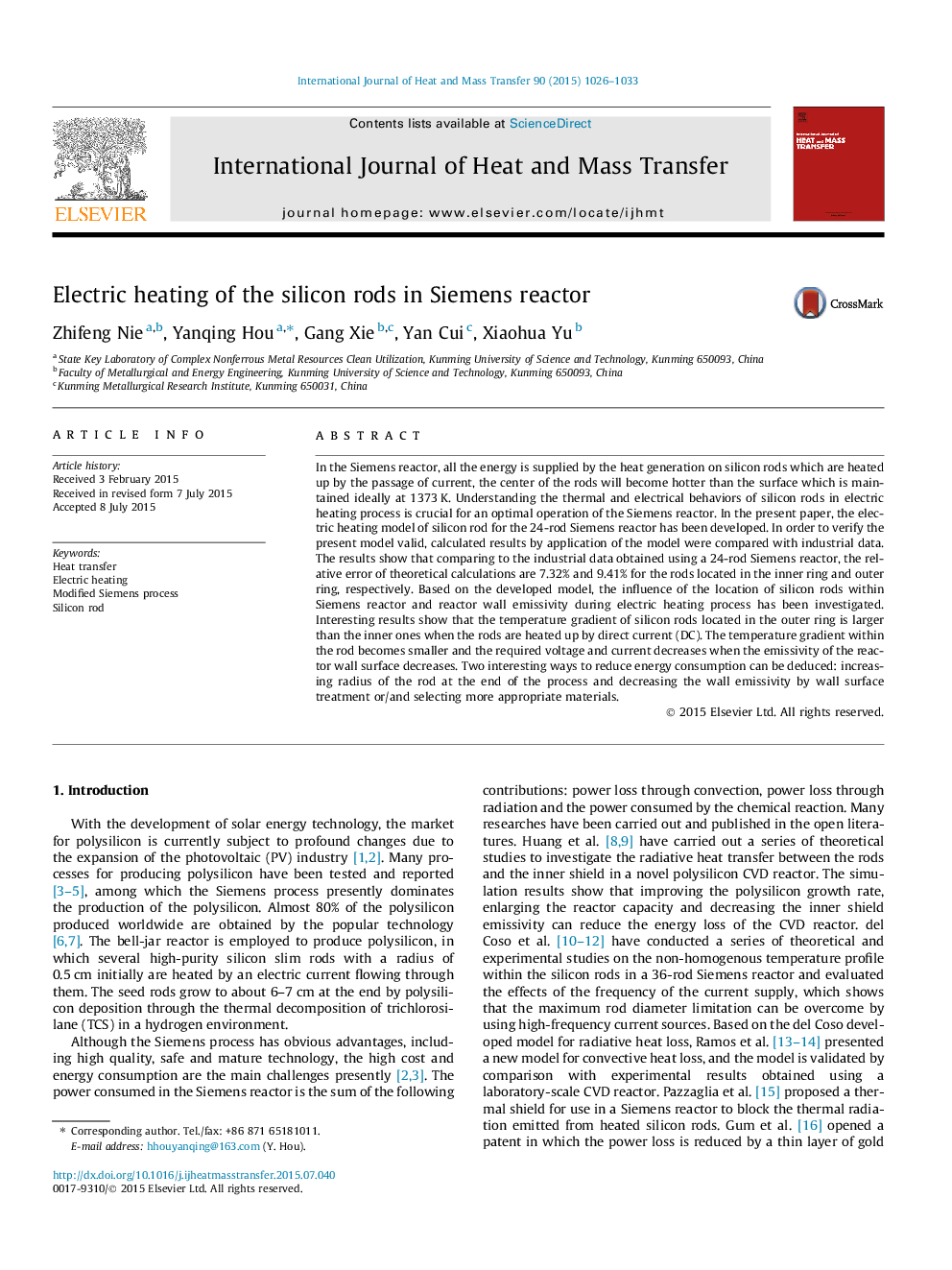| Article ID | Journal | Published Year | Pages | File Type |
|---|---|---|---|---|
| 7056571 | International Journal of Heat and Mass Transfer | 2015 | 8 Pages |
Abstract
In the Siemens reactor, all the energy is supplied by the heat generation on silicon rods which are heated up by the passage of current, the center of the rods will become hotter than the surface which is maintained ideally at 1373Â K. Understanding the thermal and electrical behaviors of silicon rods in electric heating process is crucial for an optimal operation of the Siemens reactor. In the present paper, the electric heating model of silicon rod for the 24-rod Siemens reactor has been developed. In order to verify the present model valid, calculated results by application of the model were compared with industrial data. The results show that comparing to the industrial data obtained using a 24-rod Siemens reactor, the relative error of theoretical calculations are 7.32% and 9.41% for the rods located in the inner ring and outer ring, respectively. Based on the developed model, the influence of the location of silicon rods within Siemens reactor and reactor wall emissivity during electric heating process has been investigated. Interesting results show that the temperature gradient of silicon rods located in the outer ring is larger than the inner ones when the rods are heated up by direct current (DC). The temperature gradient within the rod becomes smaller and the required voltage and current decreases when the emissivity of the reactor wall surface decreases. Two interesting ways to reduce energy consumption can be deduced: increasing radius of the rod at the end of the process and decreasing the wall emissivity by wall surface treatment or/and selecting more appropriate materials.
Keywords
Related Topics
Physical Sciences and Engineering
Chemical Engineering
Fluid Flow and Transfer Processes
Authors
Zhifeng Nie, Yanqing Hou, Gang Xie, Yan Cui, Xiaohua Yu,
